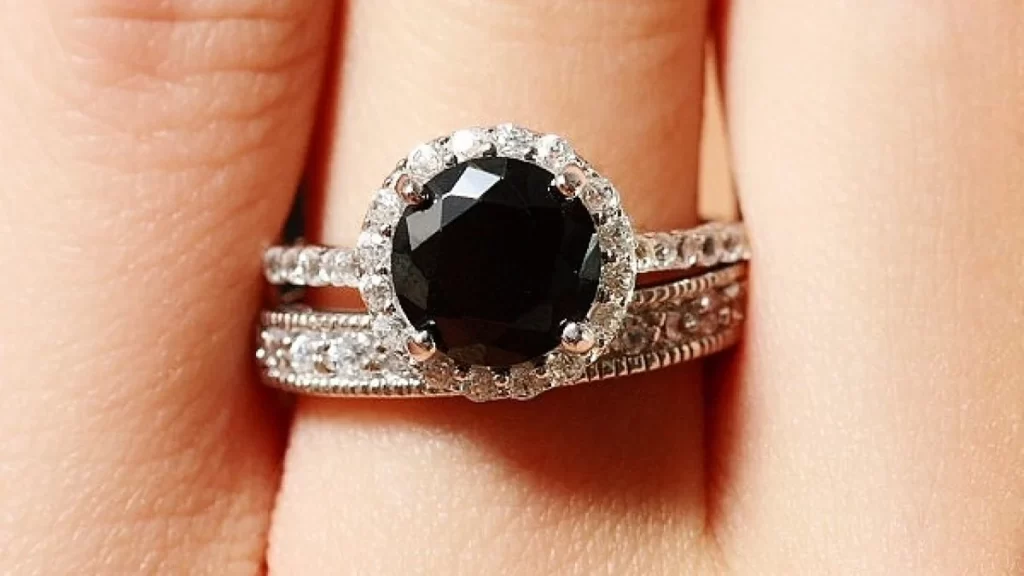Engagement rings have long been a symbol of love and commitment, often featuring a central gemstone that carries significant meaning. While diamonds have traditionally dominated the market, other gemstones are increasingly popular choices, each offering its own unique symbolism. This exploration into the significance of various gemstones not only highlights their beauty but also delves into the deeper meanings they convey about love, relationships, and destiny.
The Reign of Diamonds
Diamonds have been the quintessential choice for engagement rings for centuries. Their popularity can be attributed to their unparalleled brilliance and durability. The word “diamond” itself comes from the Greek word “adamas,” meaning invincible or indestructible, symbolizing the unbreakable bond between partners. Diamonds are also believed to bring clarity and strength to relationships, enhancing fidelity and trust. The timeless appeal of diamonds is often associated with enduring love and commitment, making them a favored choice for engagement rings.
The Allure of Sapphires
Sapphires, especially blue ones, are another popular choice for engagement rings. Their rich history and deep symbolism make them a meaningful alternative to diamonds. Blue sapphires symbolize wisdom, virtue, and good fortune. In ancient cultures, they were believed to protect loved ones from envy and harm. The deep blue hue of a sapphire is thought to represent the heavens, making it a celestial choice that conveys a sense of eternal love and divine connection. Famous sapphire engagement rings, like the one worn by Princess Diana and later by Kate Middleton, have also contributed to their popularity and desirability.
The Passion of Rubies
Rubies, with their intense red color, are synonymous with passion and desire. Known as the “king of gemstones,” rubies are believed to bring health, wealth, wisdom, and success in love. The fiery red of the ruby symbolizes the flame of love that burns strong and bright, making it an ideal gemstone for expressing deep and passionate emotions. Rubies are also associated with vitality and vigor, adding a dynamic and energetic aspect to the symbolism of engagement rings.
The Tranquility of Emeralds
Emeralds, with their lush green color, represent growth, renewal, and prosperity. They are often associated with Venus, the goddess of love, which underscores their connection to romance and harmony. Emeralds are believed to bring balance and calm to relationships, fostering mutual understanding and compassion. Their association with spring and renewal makes them a perfect choice for couples who view their love as a journey of growth and transformation. Cleopatra’s famed love for emeralds further adds to their allure and romantic connotation.
The Uniqueness of Alternative Gemstones
Beyond the traditional choices of diamonds, sapphires, rubies, and emeralds, a variety of alternative gemstones are gaining popularity for engagement rings. For instance, amethysts symbolize peace and stability, while opals are known for their unique play of colors and are associated with creativity and imagination. Moonstones, with their ethereal glow, are believed to enhance intuition and emotional balance, making them an intriguing choice for modern couples seeking something different yet meaningful.
Conclusion
Engagement rings are more than just beautiful pieces of jewelry; they are rich in symbolism and meaning. Whether it’s the enduring brilliance of a diamond, the celestial beauty of a sapphire, the passionate intensity of a ruby, or the tranquil charm of an emerald, each gemstone tells a unique story. As couples choose the gemstone that best represents their love and commitment, they are also selecting a symbol that reflects their destiny together. The growing trend towards diverse and meaningful gemstones in engagement rings underscores the evolving nature of love and the desire to find personal and profound expressions of commitment.





More Stories
Strategies for Attracting the Right Buyer for Patek Philippe Nautilus
Why Diamond Halo Engagement Rings Are a Perfect Blend of Classic and Contemporary?
The Most Popular Demon Slayer Costumes Among Cosplayers